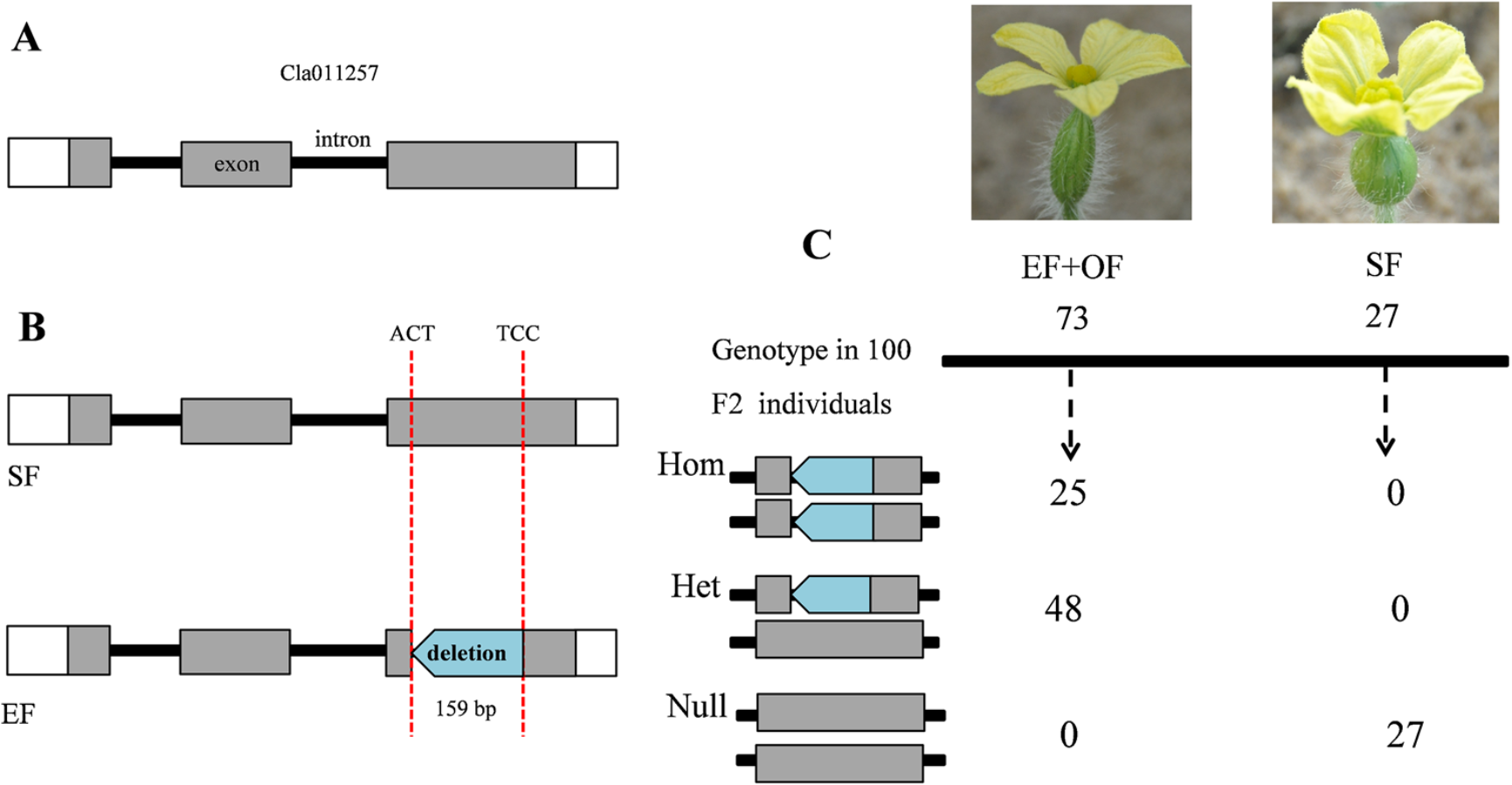The polyploidy watermelon breeding group of Zhengzhou Fruit Research Institute, Chinese Academy of Agricultural Sciences (CAAS) reveals a candidate gene for fruit shape in watermelon. The related paper was recently published on Theoretical and Applied Genetics.
As an important cucurbit crop throughout the word, watermelon presents different fruit shapes including elongate, oval and spherical. However, the genetic pattern and the developmental mechanisms of watermelon fruit shape are not justified yet.
In this study, Segregation analysis suggested that fruit shape of watermelon was controlled by a single locus and elongate fruit (OO) was incompletely dominant to spherical fruit (oo) with the heterozygote (Oo) being oval fruit. According to BSA-seq and GWAS, we demonstrated thatCla011257 gene was the candidate gene of watermelon fruit shape (ClFS1), The CDS of Cla011257 had a 159 bp deletion which resulted in the omission of 53 amino acids in elongate watermelon. The predicted protein of the Cla011257 gene fits in IQD protein family.Anindel marker was developed which can be used to identify the fruit shape at the seedling stage. Additionally, current results will be useful in marker assisted breeding for selection of desired traits at early stage of seedling.

This work was supported by the Agricultural Science and Technology Innovation Program (ASTIP) (CAAS-ASTIP-2017-ZFRI), the China Agriculture Research System (CARS-25-03), and The Central Public-interest Scientific Institution Basal Research Fund, China (1610192016301 and 1610192016209). Associate Prof. Dou Junling of Zhengzhou Fruit Research Institute is the first author, and Prof. Liu Wenge is the corresponding author. More details can be found in the link:
https://link.springer.com/article/10.1007/s00122-018-3050-5
By Dou Junling
junlingdou@163.com
